M.J. Schoen
User Experience. Design. Code. Art.
A creative cataract of sketches, experiments,
and thoughts that shake up the status quo.
{ creative blog }
Nomad Progress III: Design
6.10.17
The first visual representations of Nomad.
I take the very best ideas that have come about thus far in the process and create mockups. The conversation shifts gradually from the structural backbone of the interface to the meaty functionality to the visual skin.
This goes through many iterations as we cycle through design modifications, client input, and user feedback.
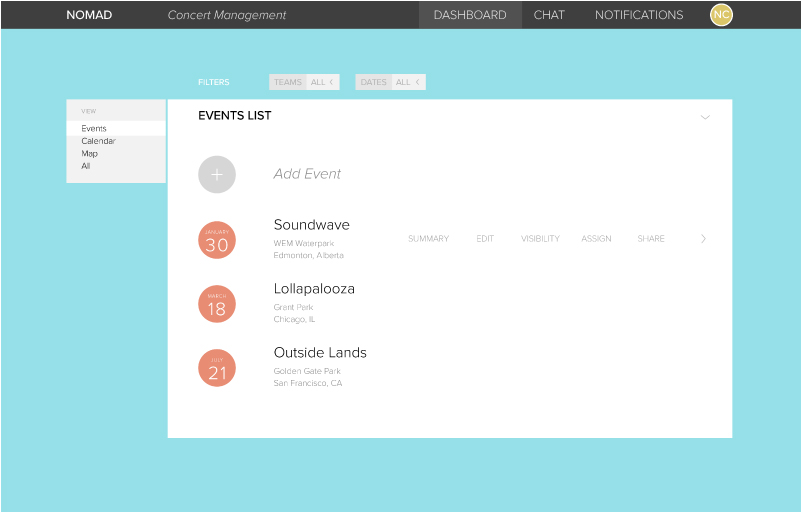
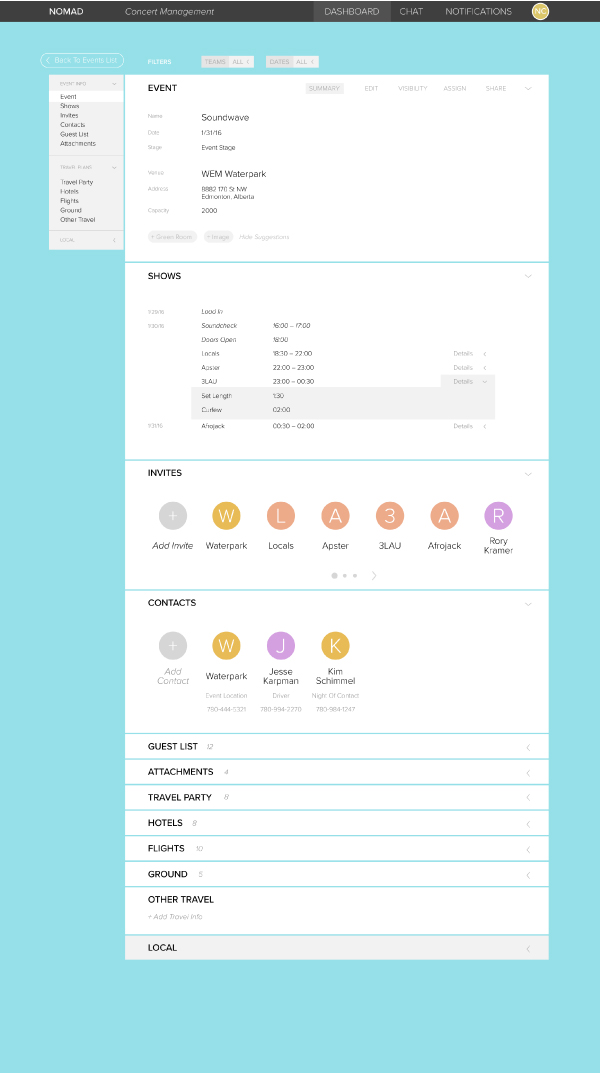

Event Page Mockup
Tour Itinerary Mockup
Chat Page Mockup
Nomad Progress II: Ideation
4.21.17
Various ideation tools used to bring Nomad to life.
My creative process follows several waves of diverging and converging. Starting from a central idea, I generate as many crazy ideas as possible. Then I hone in on the best creative directions, using client and user feedback. Rinse. Repeat.
The result is not only arriving at strong design solutions with cohesive running themes, but coming up with innovative ideas that never would have materialized otherwise.
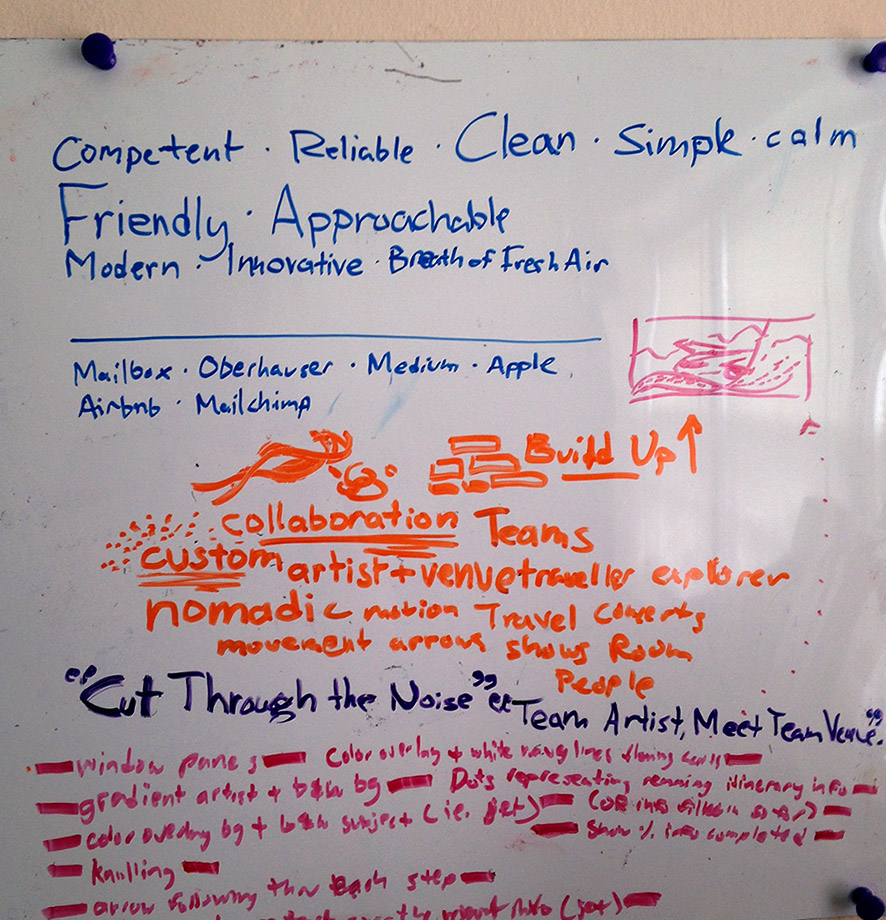
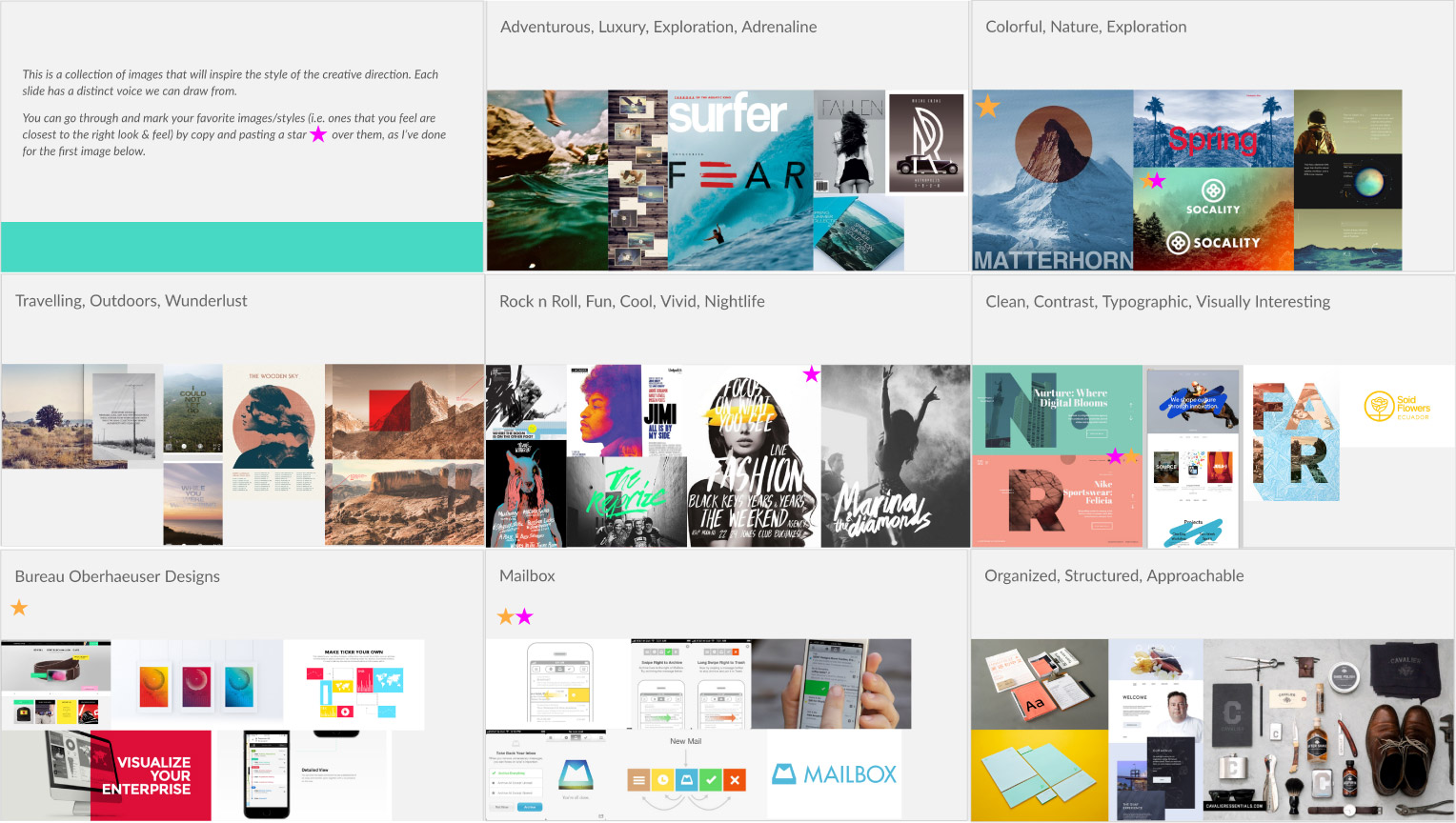
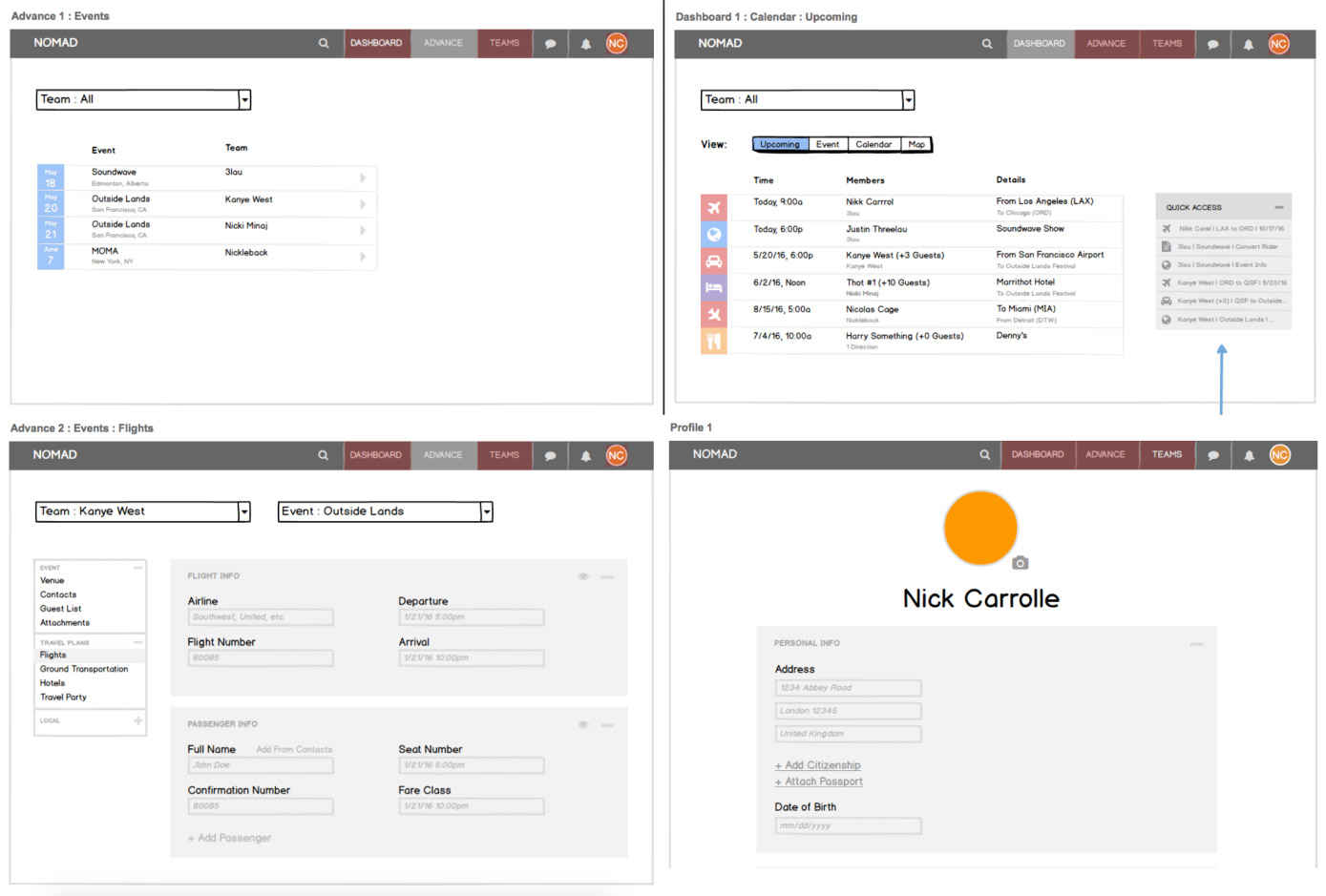
Generating ideas—the crazier the better. Themes and personality start to emerge.
Collecting inspiration from design, typography, music, photography, and brand identities.
Developing the skeleton of the interface with a focus on navigation, user flow, and information hierarchy.
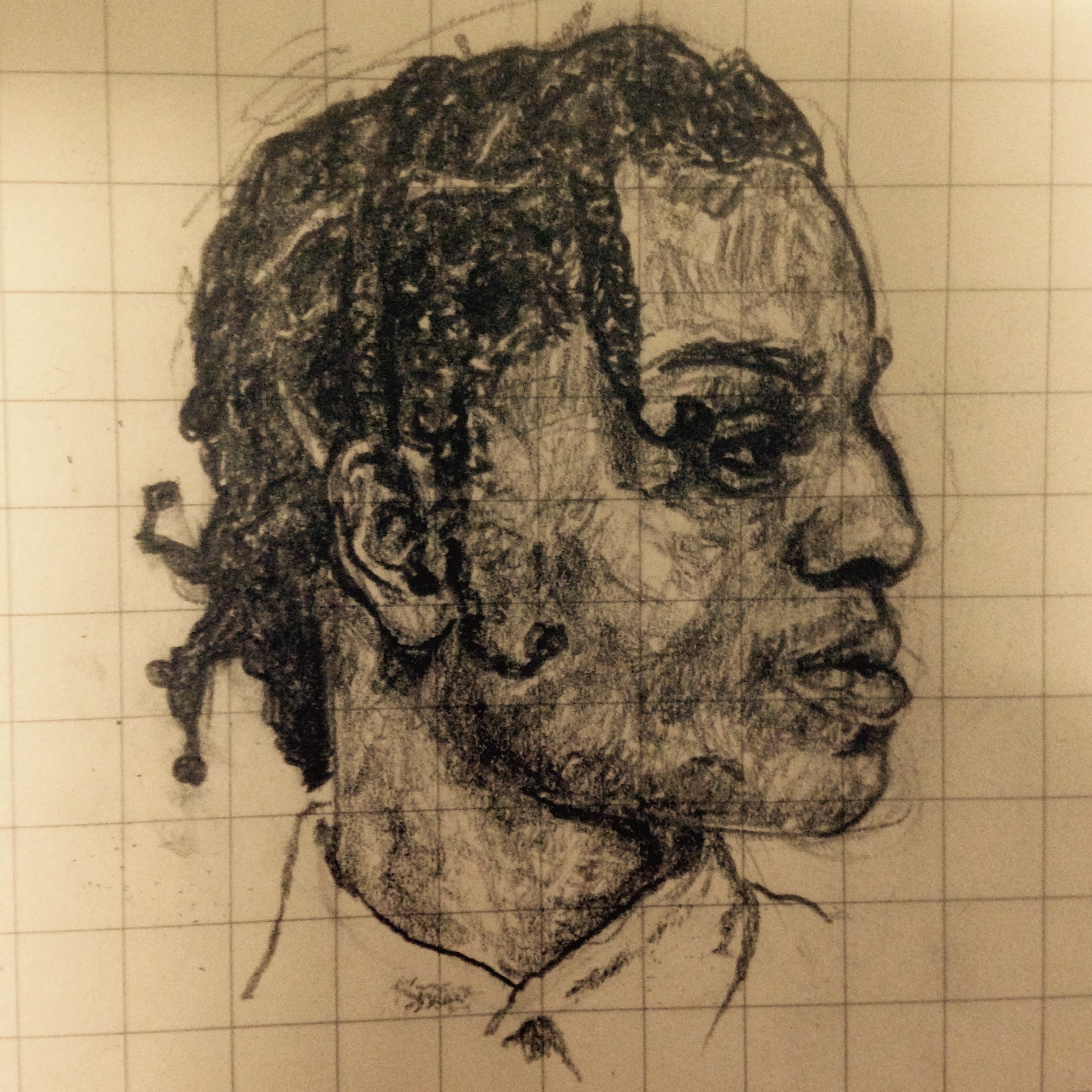
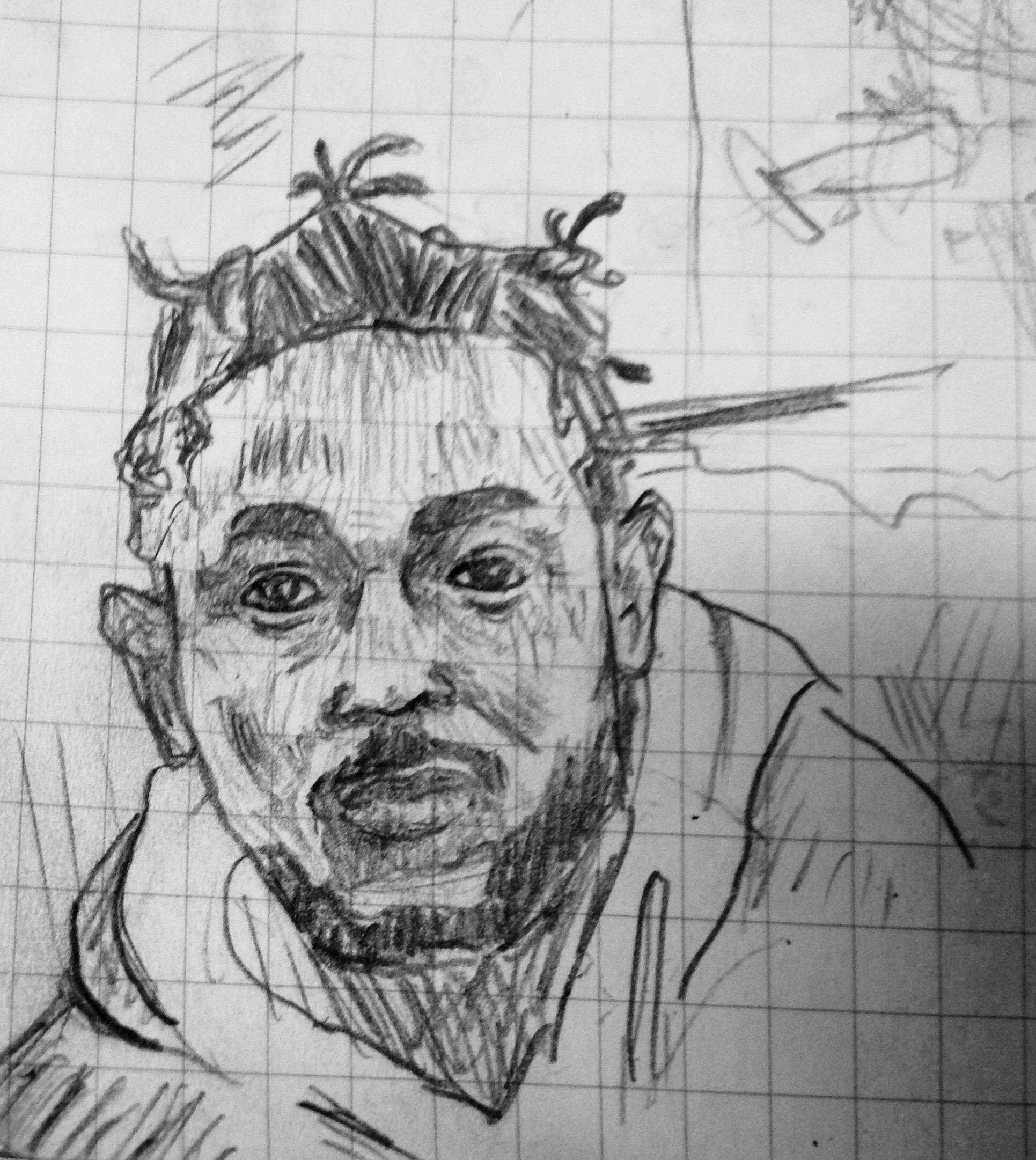
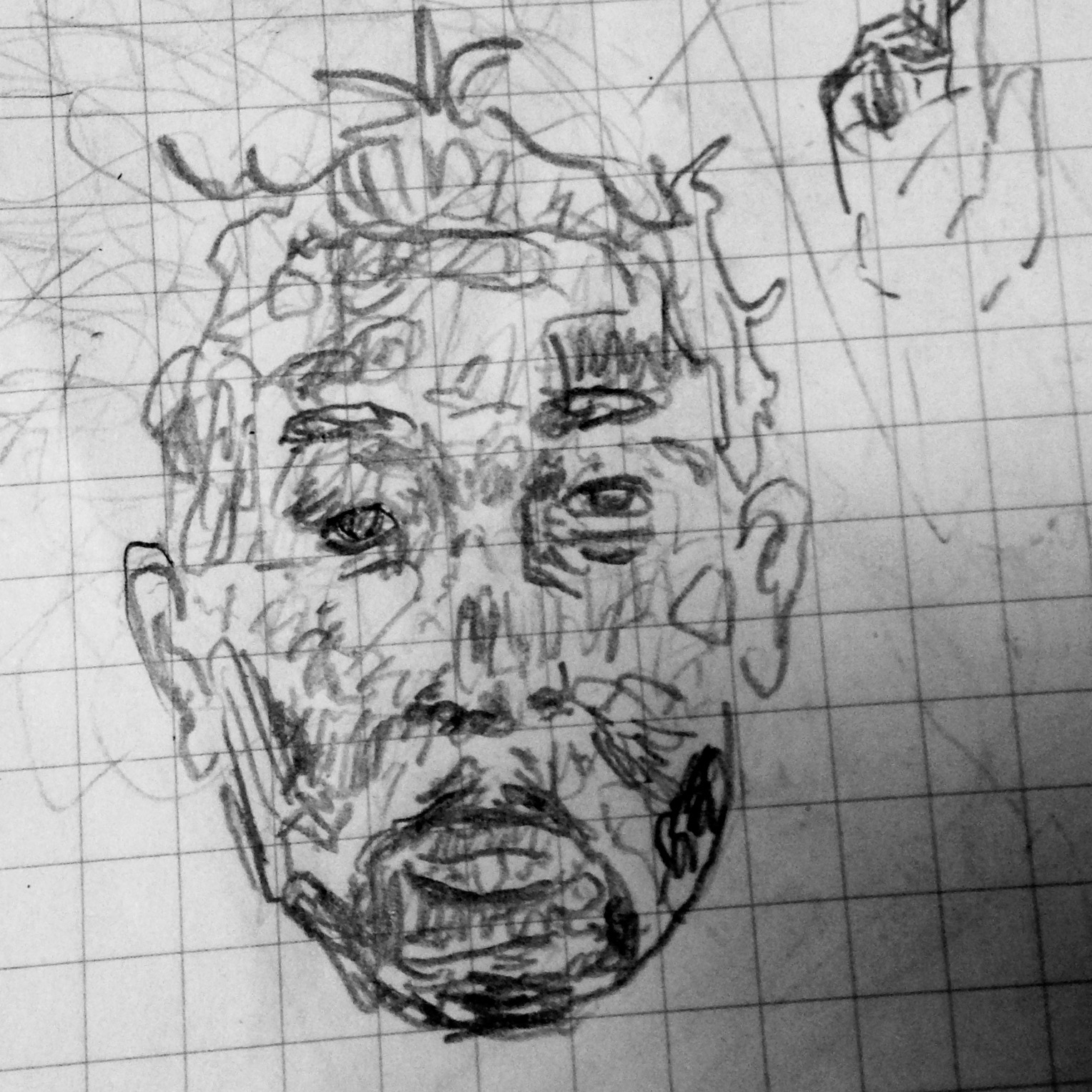
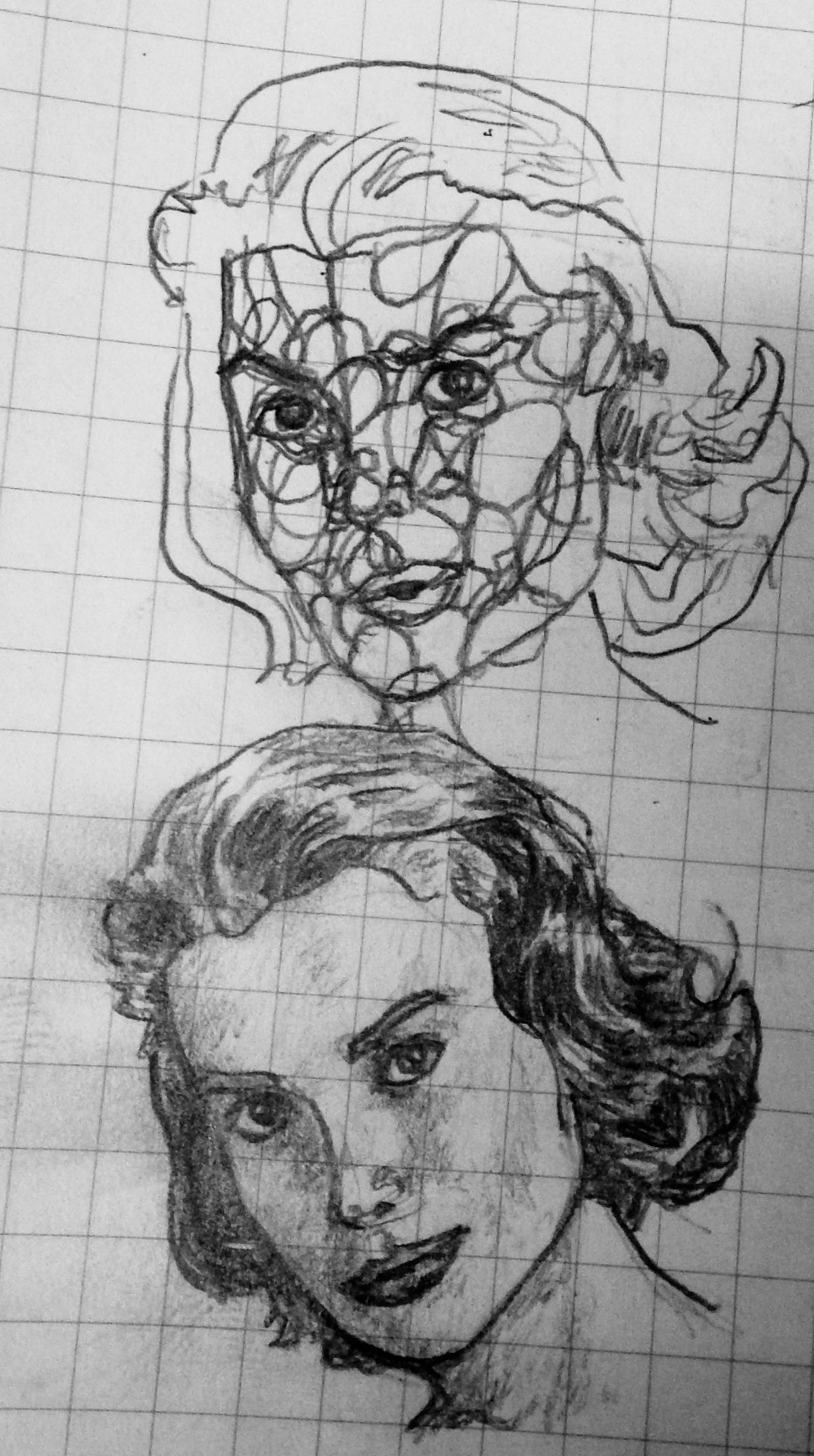
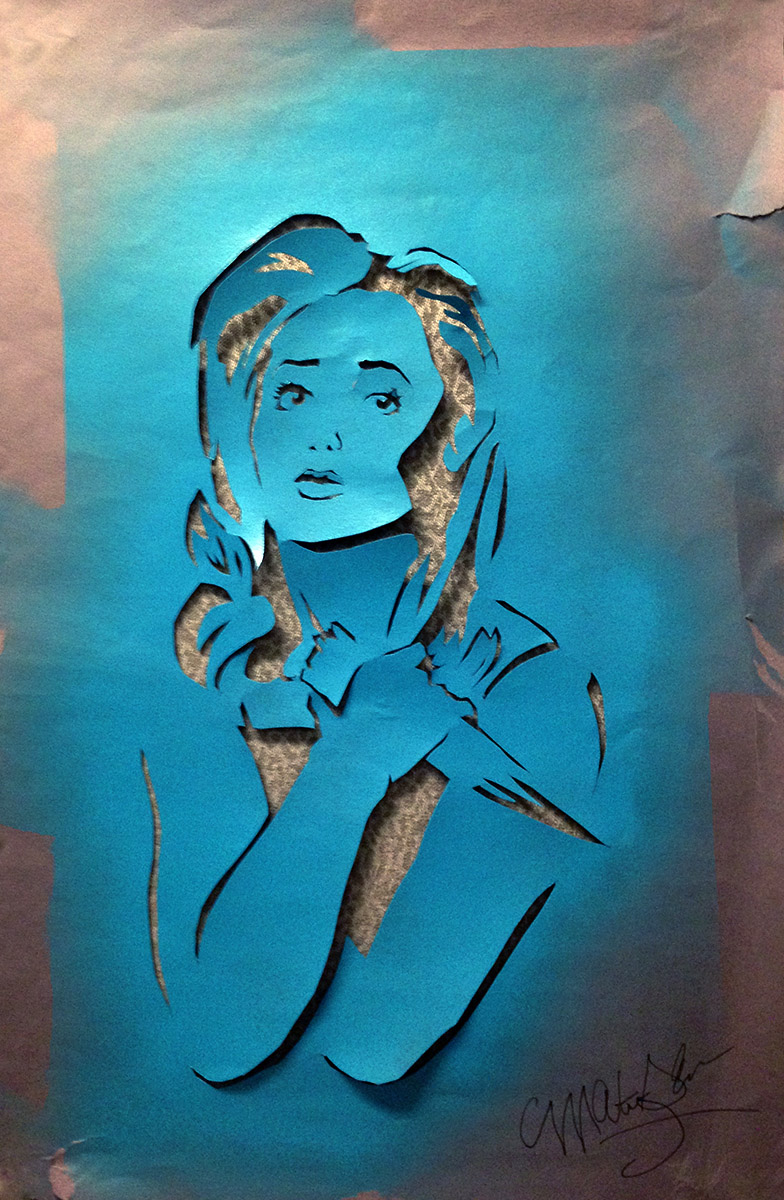
Lord Pretty Flacko Jody
K Dot
K Dot in Dots
Grace Kelly x Grace Kelly
Chosen One
“Study of Musicians and Actors”
4.12.17
Experimental styles of portraits of various respected creatives, from one time or another.
Nomad Progress I: Stakeholder Questions
4.8.17
An example of initial stakeholder questions used with Nomad Tour Management.
The purpose of these is to get on the same page as company leadership. I aim for questions to start general and get more specific in follow-up conversations. This way you can start to hone in on an understanding of the business and their needs without overwhelming the client with a deluge of pointless questions.
Some information has been redacted in the interest of the client.
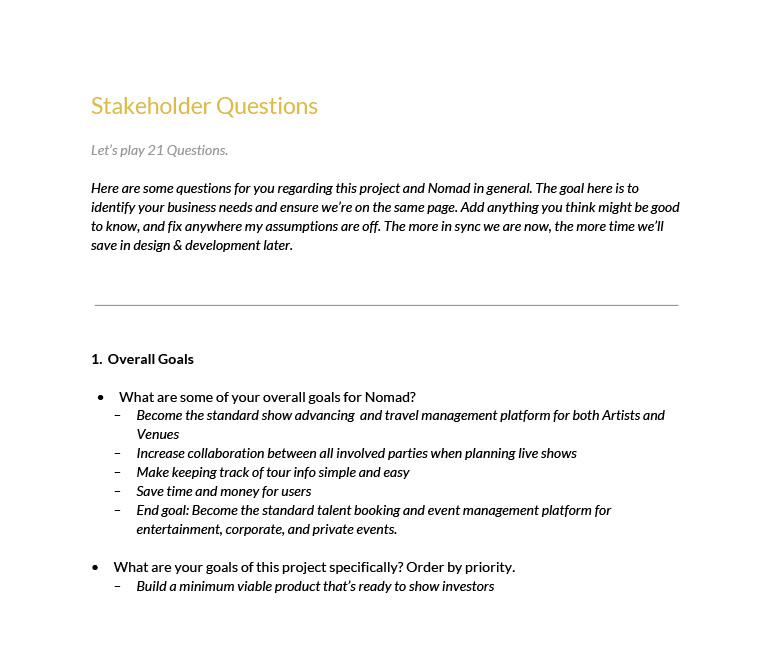
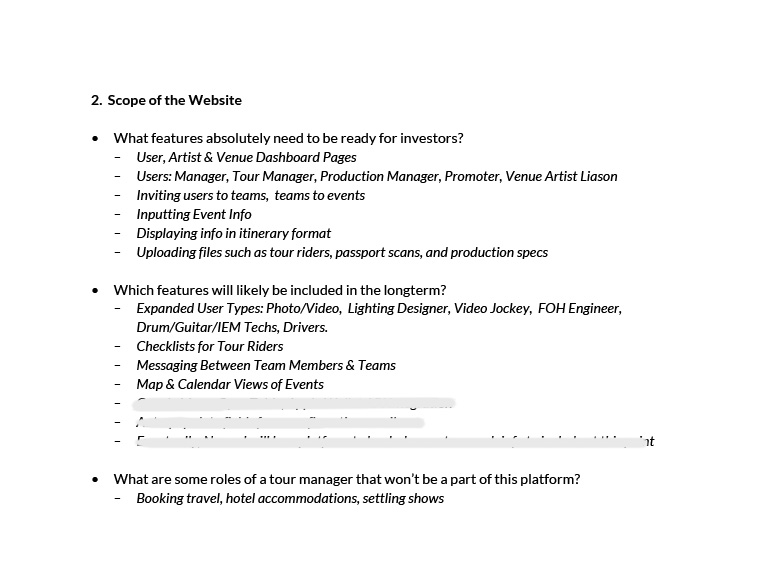
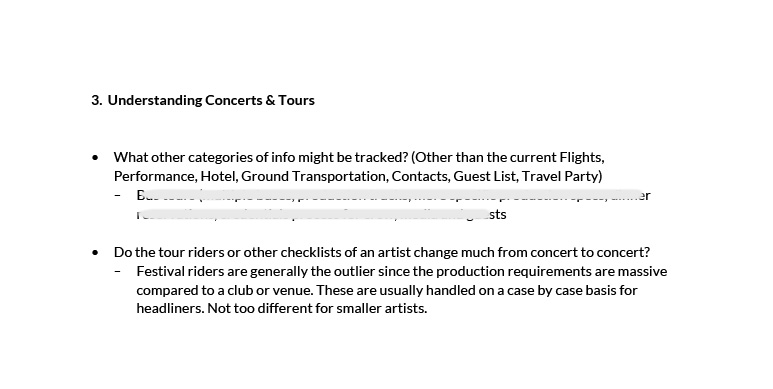
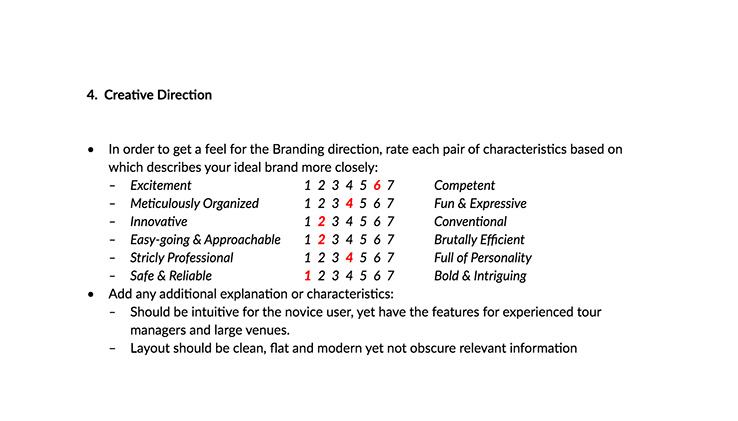
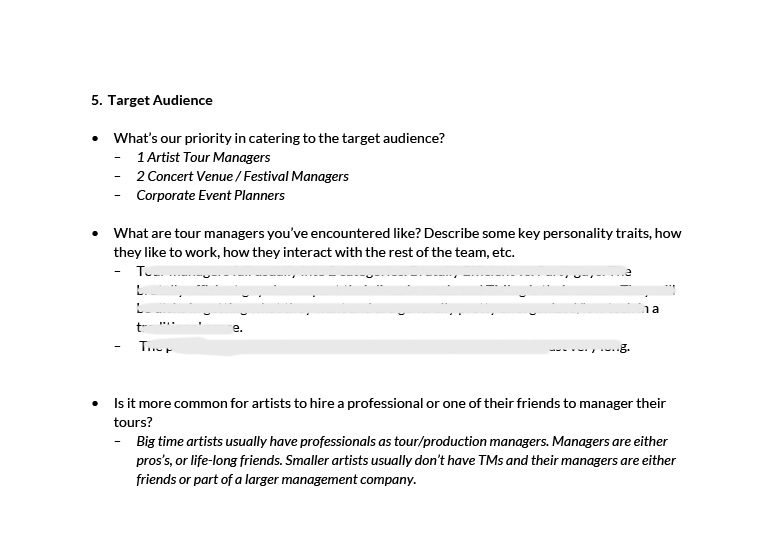
Getting a view of the big picture is crucial, and where I always start.
Identifying client expectations in the short and longterm prevents miscommunication down the line.
When working with a new field, it's important to fill in major gaps of knowledge.
Defining the overall feeling ensures the design will take a form the client will be happy with.
Users reign supreme. Understanding the target audience is imperative to designing for them.
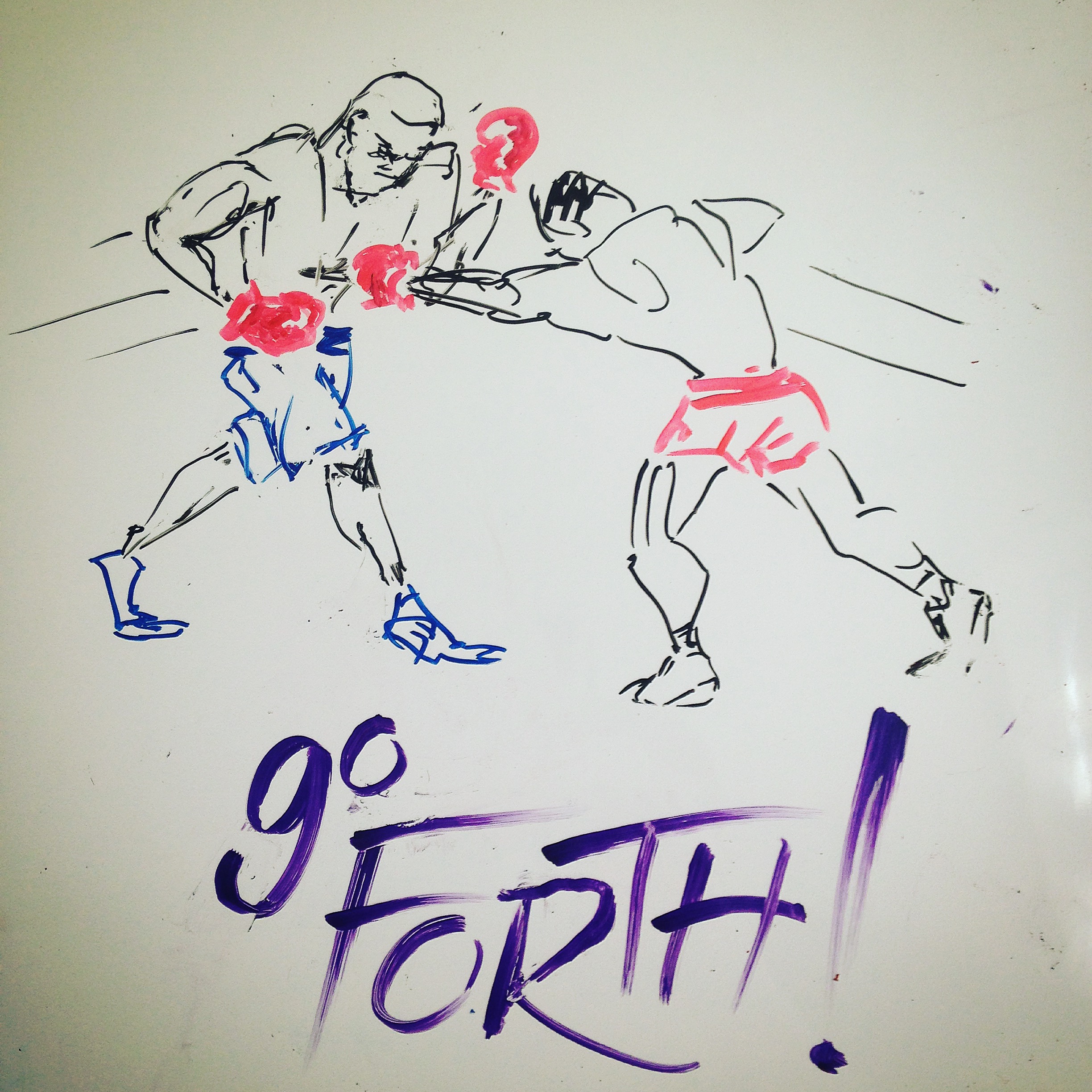
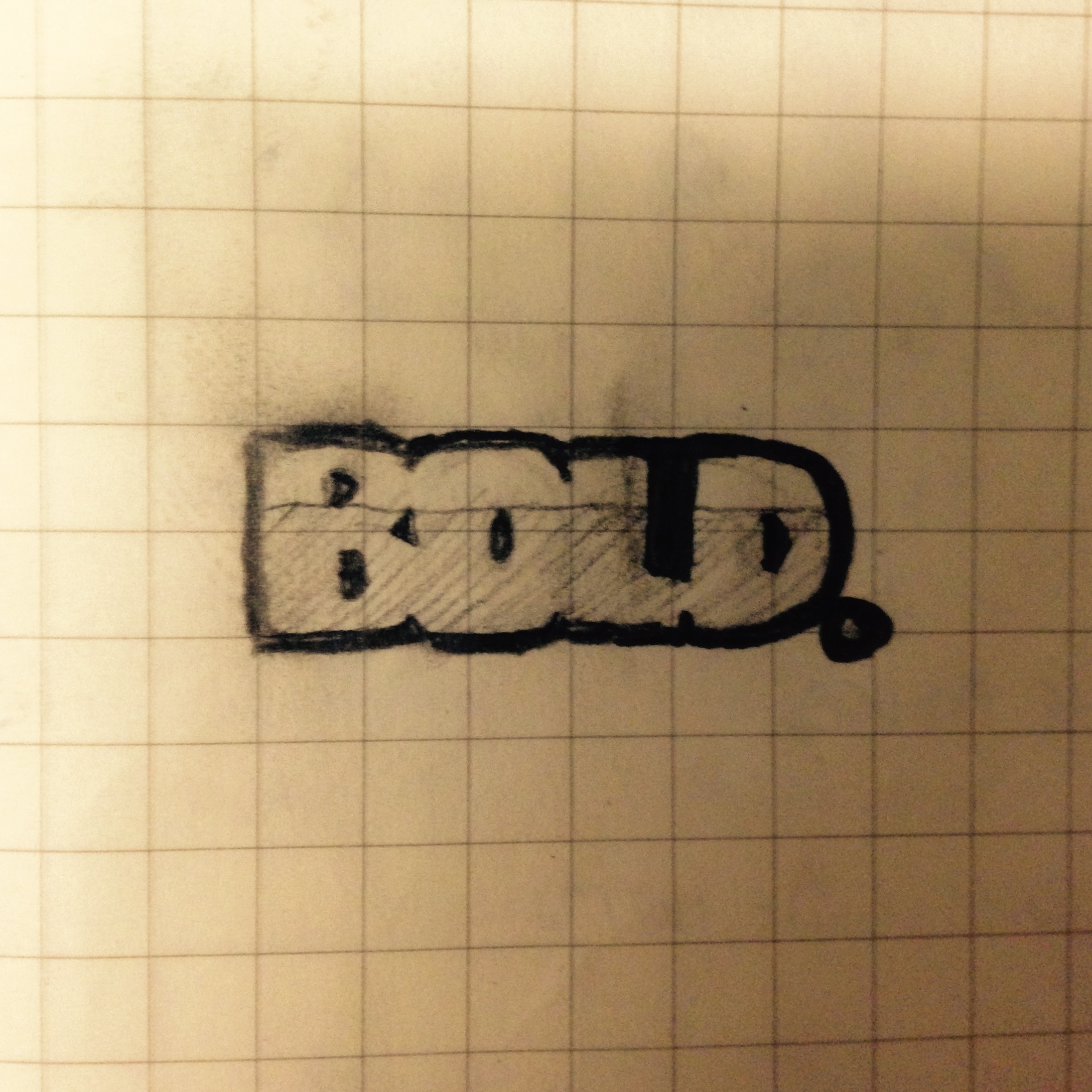
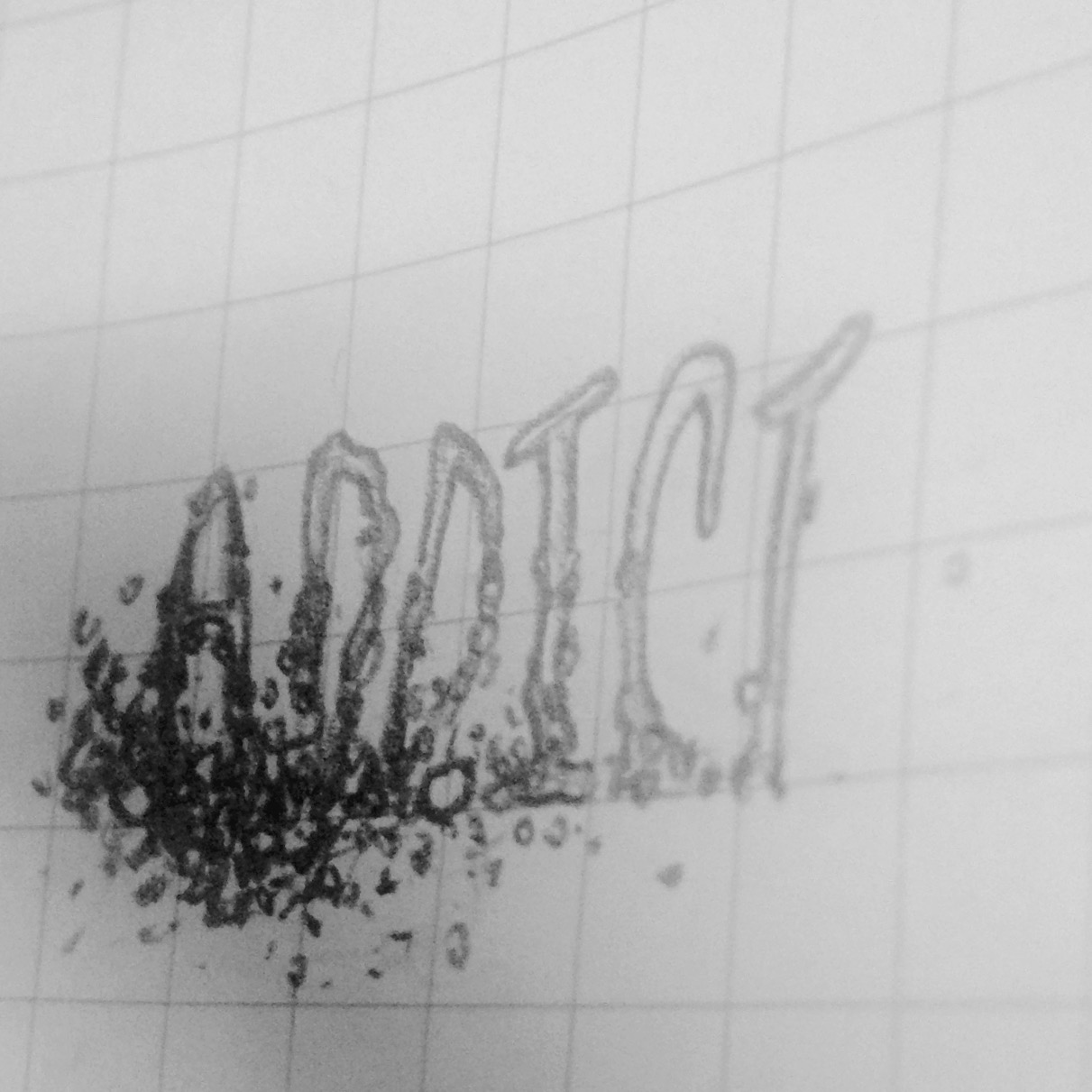

“Study in Lettering and Emotion”
1.24.17
A { silly } attempt at mirroring a word's emotion through lettering.
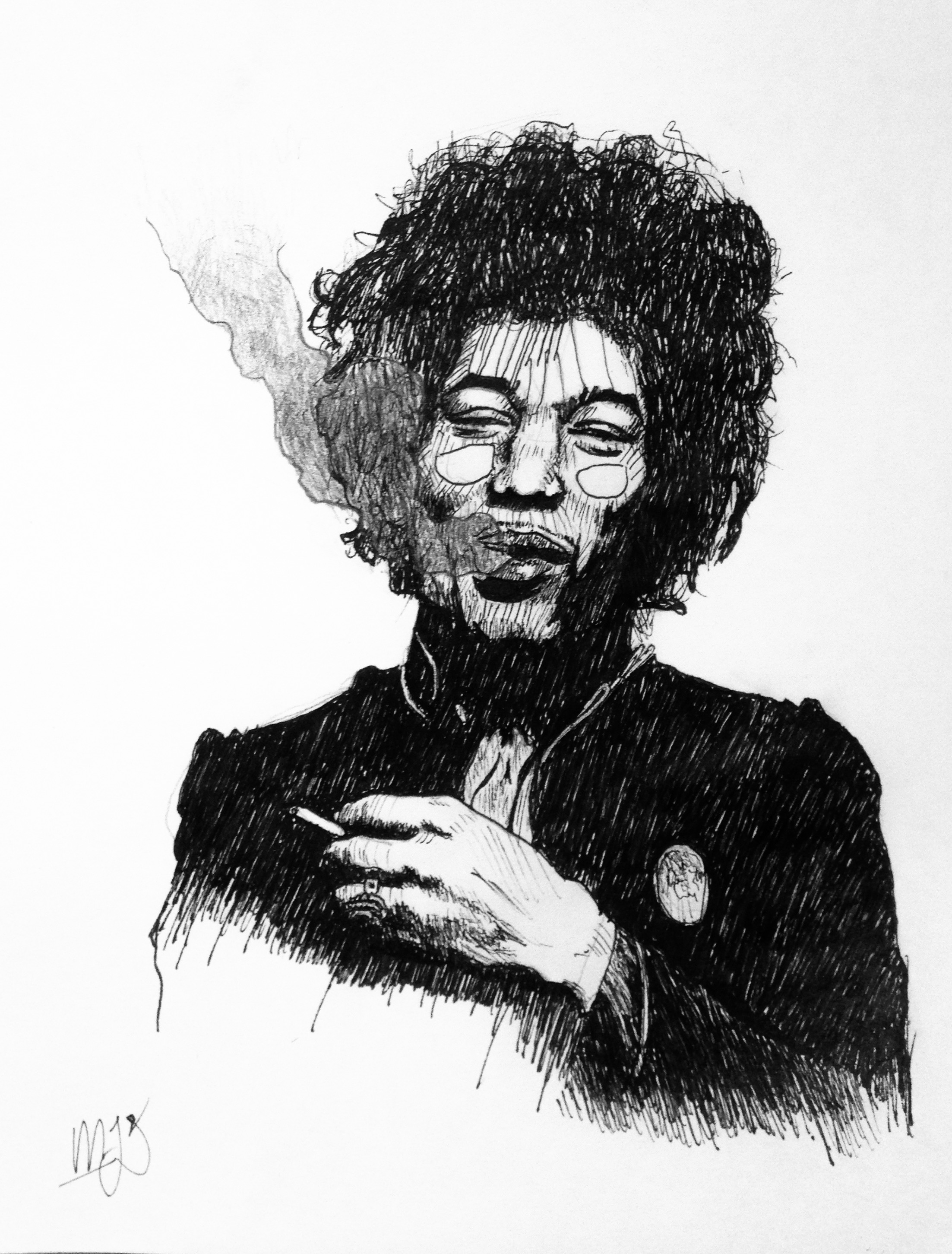
“Jimi”
12.9.16
A sketch in ink of a musician that shook the world.